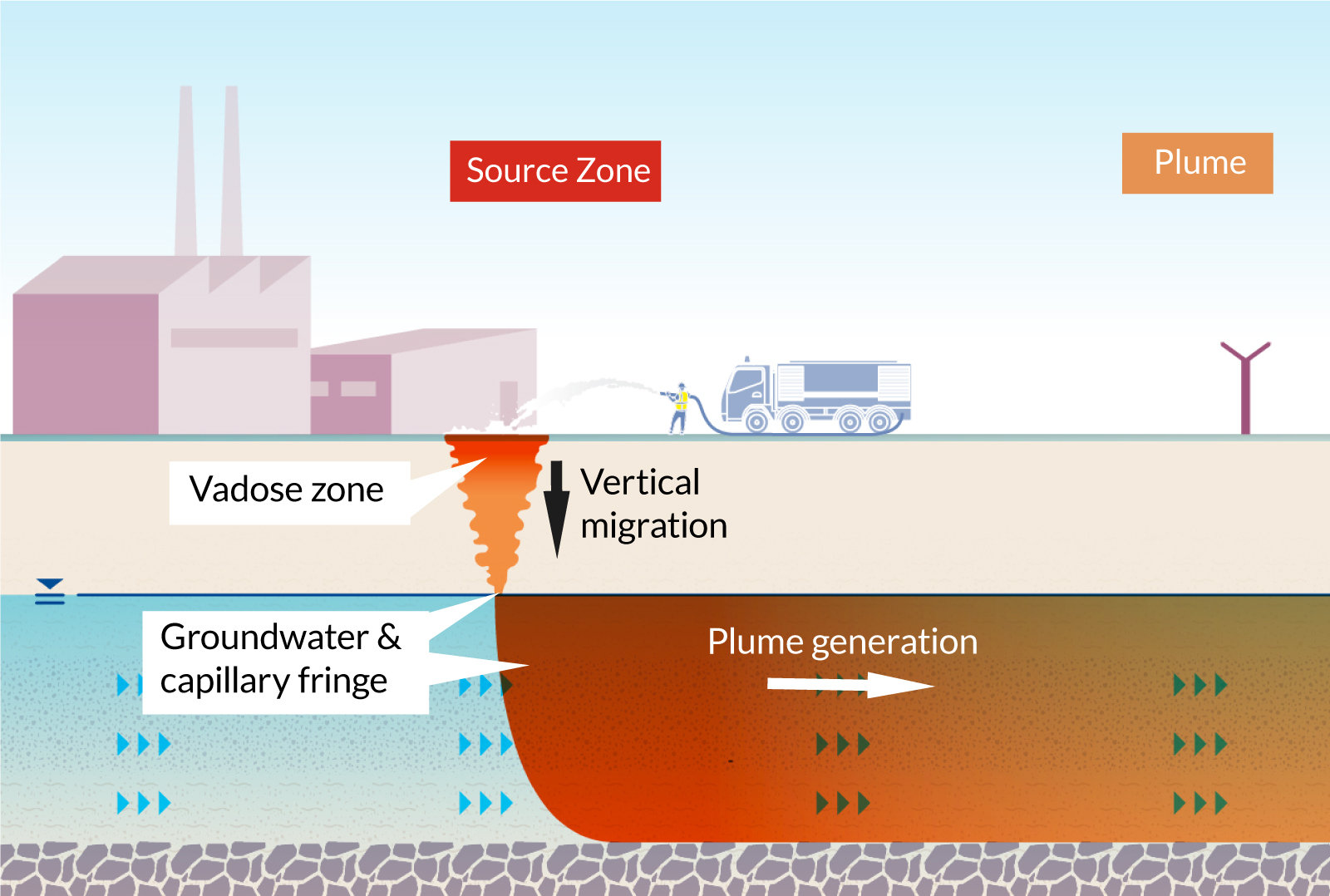The Future in PFAS Waste Management Methods for Environmental Protection
Wiki Article
Innovative PFAS Treatment Solutions for Safer Water
The raising occurrence of PFAS contamination in water products necessitates a critical evaluation of cutting-edge therapy services. Additionally, arising bioremediation strategies offer an even more lasting method to taking on PFAS difficulties. pfas management.Introduction of PFAS Contamination
PFAS contamination has actually arised as a considerable ecological and public health issue. Per- and polyfluoroalkyl substances (PFAS) are a group of artificial chemicals recognized for their perseverance in the setting and body, leading them to be generally referred to as "permanently chemicals." These substances have actually been extensively used in different markets, including firefighting foams, water-repellent textiles, and food packaging, mainly as a result of their water- and grease-resistant residential properties.The widespread use PFAS has led to their discovery in soil, water materials, and also in the blood of human beings and animals. Studies have linked PFAS direct exposure to numerous wellness problems, including developmental impacts in babies, body immune system dysfunction, and numerous types of cancer. Furthermore, the ecological persistence of these compounds complicates their destruction and elimination, increasing worries about lasting eco-friendly impacts.
Regulative bodies are significantly implementing rigorous guidelines to keep an eye on and lower PFAS degrees in drinking water and other environmental mediums. As recognition of PFAS contamination expands, it has actually become necessary for areas and markets to seek reliable therapy remedies to reduce direct exposure and secure public health and wellness.
Advanced Filtering Technologies
As the necessity to deal with PFAS contamination heightens, advanced purification modern technologies have actually arised as a pivotal part in the removal initiatives targeted at removing these consistent chemicals from water sources. These technologies leverage sophisticated mechanisms to successfully target and record PFAS compounds, which are infamously immune to conventional treatment methods.Among the most encouraging approaches is the usage of granular turned on carbon (GAC), which adsorbs PFAS particles due to its high surface area and permeable framework. This technique has been commonly carried out in both local and industrial settings, showing significant reductions in PFAS focus. In addition, ion exchange materials have actually gained grip, specifically designed to precisely bind PFAS ions from water, therefore facilitating their removal.
Membrane filtering innovations, such as reverse osmosis and nanofiltration, also reveal efficacy in PFAS elimination by literally separating impurities from water - pfas management. These systems can attain high degrees of purity, making them suitable for drinking water applications
Chemical Therapy Technologies
Numerous chemical treatment technologies are being explored to effectively resolve PFAS contamination in water supplies. One promising strategy entails using innovative oxidation processes (AOPs), which utilize powerful oxidants such as ozone, hydrogen peroxide, or chlorine dioxide combined with UV light to break down PFAS substances right into much less damaging substances. This technique has actually shown efficiency in research laboratory settings, showing possible for scalability in real-world applications.One more ingenious strategy is the growth of ion-exchange materials especially developed to target PFAS. These resins can uniquely adsorb PFAS compounds from water, permitting their elimination throughout therapy processes. Current developments have actually improved the efficiency and capacity of these resins, making them a positive option for water treatment centers.
Additionally, researchers are investigating making use of chemical agents like persulfate and ferrous ions to enhance the degradation of PFAS in infected water. These representatives can induce pfas management chemical responses that assist in the breakdown of relentless PFAS compounds.
Emerging Bioremediation Techniques
Current advancements in chemical treatment innovations have actually led the method for exploring bioremediation techniques as a feasible choice for addressing PFAS contamination. Bioremediation takes advantage of the natural metabolic processes of microbes to deteriorate or transform toxins, making it an enticing strategy for tackling consistent pollutants like PFAS.
Arising strategies in bioremediation include the use of genetically engineered microorganisms that can specifically target and break down PFAS substances. These microbial strains are being created for their improved destruction abilities, boosting the performance of the removal procedure. Furthermore, researchers are exploring the possibility of plant-assisted bioremediation, where specific plant types might uptake and withdraw PFAS from infected dirt and water.
Another encouraging technique is the application of bioaugmentation, which includes presenting helpful microbes into infected environments to increase the destruction of PFAS. This technique can facilitate much faster removal timelines and improve general effectiveness.

Regulative Frameworks and Criteria
A detailed regulative structure is essential for successfully taking care of PFAS contamination and ensuring public health defense. The raising acknowledgment of per- and polyfluoroalkyl compounds (PFAS) as environmental pollutants has actually motivated numerous government and state firms to create criteria that govern their visibility in water supplies. The U.S. Environmental Security Agency (EPA) has actually developed health and wellness advisories and is pursuing establishing enforceable restrictions for PFAS in drinking water.State-level laws differ significantly, with some states taking on more stringent guidelines than those recommended by the EPA. These policies frequently consist of maximum contaminant levels (MCLs) for details PFAS compounds, monitoring needs, and reporting obligations for water utilities. Furthermore, emerging structures concentrate on the removal of contaminated websites, highlighting the requirement for effective therapy modern technologies.

Verdict
In final thought, the growth and implementation of innovative PFAS treatment options are vital for dealing with the prevalent issue of water contamination. Advanced filtering modern technologies, chemical therapies, and emerging bioremediation techniques jointly offer a diverse approach to successfully minimize and deteriorate PFAS levels. As regulatory frameworks remain to evolve, incorporating these innovations will be vital to guard public health and wellness and recover the integrity of polluted water resources, inevitably adding to a cleaner and safer atmosphere.Report this wiki page